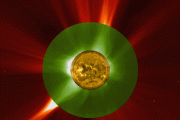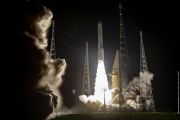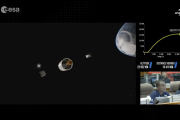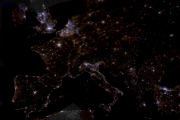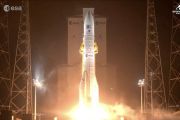
Copernical Team
Φsat-2 website for navigator

Φsat-2
Arctic Weather Satellite
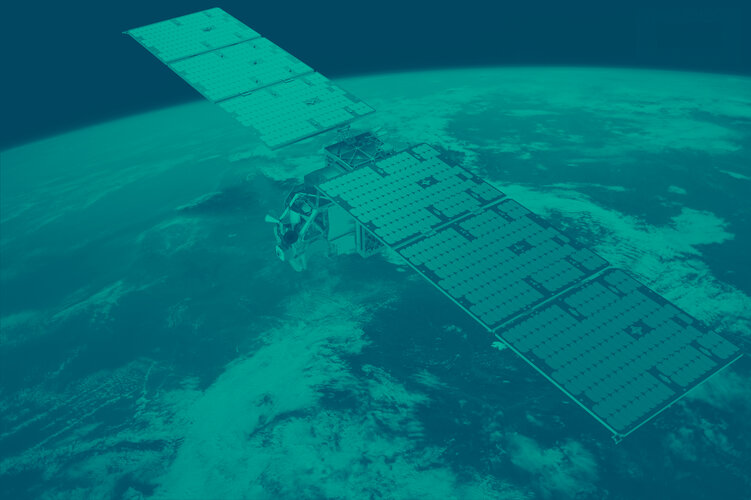
Arctic Weather Satellite
Monitoring marine litter from space is now a reality
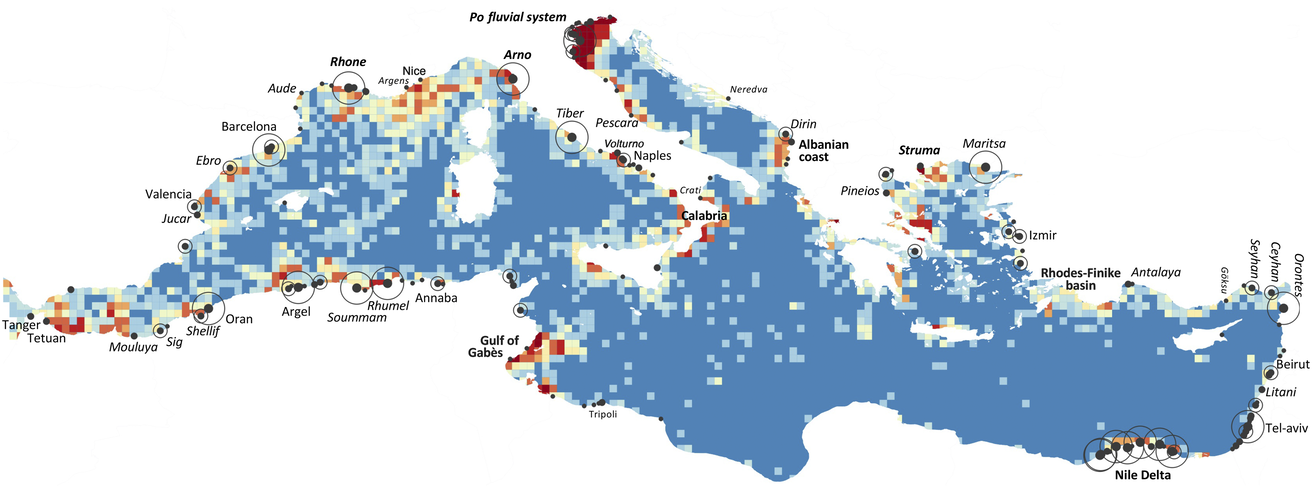
Every 60 seconds the equivalent of a lorry-load of plastic enters the global ocean. Where it goes after that remains largely unknown. But a new ESA Discovery study reported in Nature Communications has proven the concept of monitoring floating plastic litter using satellites.
Black hole observed 'awakening' for the first time
 Astronomers have been able to observe a supermassive black hole waking up and setting the heart of its host galaxy alight for the first time, the European Southern Observatory said on Tuesday.
The galaxy 300 million light years from Earth in the Virgo constellation had been quiet for decades until late 2019, when it suddenly began to shine brighter than ever before.
The centre of the gal
Astronomers have been able to observe a supermassive black hole waking up and setting the heart of its host galaxy alight for the first time, the European Southern Observatory said on Tuesday.
The galaxy 300 million light years from Earth in the Virgo constellation had been quiet for decades until late 2019, when it suddenly began to shine brighter than ever before.
The centre of the gal NASA Satellites Find Snow Didn't Offset Southwest US Groundwater Loss
 Record snowfall in recent years has not been enough to offset long-term drying conditions and increasing groundwater demands in the U.S. Southwest, according to a new analysis of NASA satellite data.
Declining water levels in the Great Salt Lake and Lake Mead have been testaments to a megadrought afflicting western North America since 2000. But surface water only accounts for a fraction of
Record snowfall in recent years has not been enough to offset long-term drying conditions and increasing groundwater demands in the U.S. Southwest, according to a new analysis of NASA satellite data.
Declining water levels in the Great Salt Lake and Lake Mead have been testaments to a megadrought afflicting western North America since 2000. But surface water only accounts for a fraction of Space Force Assigns Ursa Space to Deliver Analytics to USINDOPACOM Post-Japanese Disaster
 Ursa Space Systems, Inc., a leader in satellite insights, has completed a U.S. Space Force Space Systems Command (SSC) task order supporting the US Indo-Pacific Command (USINDOPACOM) in response to Japan's recent natural disaster. Ursa Space has provided analysis of commercial space remote sensing data to assess the damage through Operational Planning Products (OPPs). The products supplied inclu
Ursa Space Systems, Inc., a leader in satellite insights, has completed a U.S. Space Force Space Systems Command (SSC) task order supporting the US Indo-Pacific Command (USINDOPACOM) in response to Japan's recent natural disaster. Ursa Space has provided analysis of commercial space remote sensing data to assess the damage through Operational Planning Products (OPPs). The products supplied inclu Thales, Spire Global, and ESSP Collaborate on Space-Based Air Traffic Surveillance Service
 Thales (Euronext Paris: HO), Spire Global (NYSE: SPIR), and European Satellite Services Provider (ESSP) have signed a Memorandum of Cooperation to introduce global satellite-based surveillance services for the air traffic management (ATM) industry and broader aviation market. These services will use a constellation of over 100 satellites to collect Automatic Dependent Surveillance-Broadcast (ADS
Thales (Euronext Paris: HO), Spire Global (NYSE: SPIR), and European Satellite Services Provider (ESSP) have signed a Memorandum of Cooperation to introduce global satellite-based surveillance services for the air traffic management (ATM) industry and broader aviation market. These services will use a constellation of over 100 satellites to collect Automatic Dependent Surveillance-Broadcast (ADS Space Systems Command Grants Contracts for Space Laser Communication Prototypes
 The United States Space Force's Space Systems Command (SSC) has awarded four contracts to Blue Origin, CACI International Inc., General Atomics, and Viasat to develop space laser communication terminal prototypes. This marks the first phase of the $100 million Enterprise Space Terminal (EST) program.
The EST program, part of SSC's Space Domain Awareness and Combat Power Program Executive O
The United States Space Force's Space Systems Command (SSC) has awarded four contracts to Blue Origin, CACI International Inc., General Atomics, and Viasat to develop space laser communication terminal prototypes. This marks the first phase of the $100 million Enterprise Space Terminal (EST) program.
The EST program, part of SSC's Space Domain Awareness and Combat Power Program Executive O Vyoma Awards Aerospacelab Contract for Second Space Surveillance Satellite
 Vyoma has awarded Aerospacelab a contract to build a microsatellite that will carry Vyoma's second Space Situational Awareness (SSA) optical payload, set for launch by the end of 2025. This mission is part of Vyoma's Flamingo constellation, which aims to deliver low-latency, high-fidelity space-based SSA data through a network of 12 satellites.
Under the contract, Aerospacelab will utilize
Vyoma has awarded Aerospacelab a contract to build a microsatellite that will carry Vyoma's second Space Situational Awareness (SSA) optical payload, set for launch by the end of 2025. This mission is part of Vyoma's Flamingo constellation, which aims to deliver low-latency, high-fidelity space-based SSA data through a network of 12 satellites.
Under the contract, Aerospacelab will utilize 
 Image:
Metallic Mars
Image:
Metallic Mars 

























